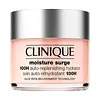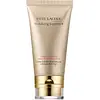What's inside
What's inside
 Key Ingredients
Key Ingredients

 Benefits
Benefits

 Concerns
Concerns

No concerns
 Ingredients Side-by-side
Ingredients Side-by-side

Water
Skin ConditioningDimethicone
EmollientButylene Glycol
HumectantGlycerin
HumectantTrisiloxane
Skin ConditioningTrehalose
HumectantSucrose
HumectantAmmonium Acryloyldimethyltaurate/Vp Copolymer
Hydroxyethyl Urea
HumectantCamellia Sinensis Leaf Extract
AntimicrobialSilybum Marianum Extract
Skin ConditioningBetula Alba Bark Extract
MaskingSaccharomyces Lysate Extract
HumectantAloe Barbadensis Leaf Water
MaskingAloe Barbadensis Leaf Extract
EmollientThermus Thermophillus Ferment
Skin ConditioningCaffeine
Skin ConditioningSorbitol
HumectantPalmitoyl Hexapeptide-12
Skin ConditioningSodium Hyaluronate
HumectantCaprylyl Glycol
EmollientOleth-10
EmulsifyingSodium Polyaspartate
HumectantAloe Barbadensis Leaf Polysaccharides
EmollientLactobacillus Ferment Lysate
Skin ConditioningSaccharide Isomerate
HumectantHydrogenated Lecithin
EmulsifyingTocopheryl Acetate
AntioxidantAcrylates/C10-30 Alkyl Acrylate Crosspolymer
Emulsion StabilisingGlyceryl Polymethacrylate
Tromethamine
BufferingPEG-8
HumectantHexylene Glycol
EmulsifyingMagnesium Ascorbyl Phosphate
AntioxidantCitric Acid
BufferingBHT
AntioxidantDisodium EDTA
Sodium Citrate
BufferingPotassium Sorbate
PreservativeSodium Benzoate
MaskingPhenoxyethanol
PreservativeCI 14700
Cosmetic ColorantCI 19140
Cosmetic ColorantWater, Dimethicone, Butylene Glycol, Glycerin, Trisiloxane, Trehalose, Sucrose, Ammonium Acryloyldimethyltaurate/Vp Copolymer, Hydroxyethyl Urea, Camellia Sinensis Leaf Extract, Silybum Marianum Extract, Betula Alba Bark Extract, Saccharomyces Lysate Extract, Aloe Barbadensis Leaf Water, Aloe Barbadensis Leaf Extract, Thermus Thermophillus Ferment, Caffeine, Sorbitol, Palmitoyl Hexapeptide-12, Sodium Hyaluronate, Caprylyl Glycol, Oleth-10, Sodium Polyaspartate, Aloe Barbadensis Leaf Polysaccharides, Lactobacillus Ferment Lysate, Saccharide Isomerate, Hydrogenated Lecithin, Tocopheryl Acetate, Acrylates/C10-30 Alkyl Acrylate Crosspolymer, Glyceryl Polymethacrylate, Tromethamine, PEG-8, Hexylene Glycol, Magnesium Ascorbyl Phosphate, Citric Acid, BHT, Disodium EDTA, Sodium Citrate, Potassium Sorbate, Sodium Benzoate, Phenoxyethanol, CI 14700, CI 19140
Tridecyl Stearate
EmollientTridecyl Trimellitate
EmollientDipentaerythrityl Hexacaprylate/Hexacaprate
EmulsifyingButylene Glycol
HumectantGlyceryl Stearate
EmollientCocos Nucifera Oil
MaskingSilica
AbrasiveCaprylic/Capric Triglyceride
MaskingAcetyl Glucosamine
Skin ConditioningCetearyl Alcohol
EmollientCeteareth-20
CleansingHexyldecyl Stearate
EmollientMoringa Oleifera Seed Extract
Skin ConditioningTuna Extract
Skin ConditioningLaminaria Digitata Extract
Skin ProtectingWhey Protein
Skin ConditioningAlgae Extract
EmollientDisodium Cocoamphodipropionate
CleansingCaprylyl Glycol
EmollientSorbitol
HumectantArtemia Extract
Skin ConditioningAcetyl Hexapeptide-8
HumectantBisabolol
MaskingCaffeine
Skin ConditioningGlycerin
HumectantSodium Hyaluronate
HumectantStearyl Alcohol
EmollientOleth-10 Phosphate
Parfum
MaskingCarbomer
Emulsion Stabilising1,2-Hexanediol
Skin ConditioningIsoceteth-20
EmulsifyingTriethanolamine
BufferingPotassium Sorbate
PreservativeDisodium EDTA
Chlorphenesin
AntimicrobialPhenoxyethanol
PreservativeCI 19140
Cosmetic ColorantCI 14700
Cosmetic ColorantTridecyl Stearate, Tridecyl Trimellitate, Dipentaerythrityl Hexacaprylate/Hexacaprate, Butylene Glycol, Glyceryl Stearate, Cocos Nucifera Oil, Silica, Caprylic/Capric Triglyceride, Acetyl Glucosamine, Cetearyl Alcohol, Ceteareth-20, Hexyldecyl Stearate, Moringa Oleifera Seed Extract, Tuna Extract, Laminaria Digitata Extract, Whey Protein, Algae Extract, Disodium Cocoamphodipropionate, Caprylyl Glycol, Sorbitol, Artemia Extract, Acetyl Hexapeptide-8, Bisabolol, Caffeine, Glycerin, Sodium Hyaluronate, Stearyl Alcohol, Oleth-10 Phosphate, Parfum, Carbomer, 1,2-Hexanediol, Isoceteth-20, Triethanolamine, Potassium Sorbate, Disodium EDTA, Chlorphenesin, Phenoxyethanol, CI 19140, CI 14700
 Reviews
Reviews

Ingredients Explained
These ingredients are found in both products.
Ingredients higher up in an ingredient list are typically present in a larger amount.
Butylene Glycol (or BG) is used within cosmetic products for a few different reasons:
Overall, Butylene Glycol is a safe and well-rounded ingredient that works well with other ingredients.
Though this ingredient works well with most skin types, some people with sensitive skin may experience a reaction such as allergic rashes, closed comedones, or itchiness.
Learn more about Butylene GlycolCaffeine is most associated with coffee, tea, and cacao. In skincare, it helps with calming inflammation and is rich in antioxidants.
While caffeine is used to treat cellulite and and dark circles, further studies are needed to prove this. It has been believed to help with these skin conditions due to its ability to dilate blood vessels and increase blood flow.
Some studies are looking into caffeine's ability to protect against UV rays.
Learn more about CaffeineCaprylyl Glycol is a humectant and emollient, meaning it attracts and preserves moisture.
It is a common ingredient in many products, especially those designed to hydrate skin. The primary benefits are retaining moisture, skin softening, and promoting a healthy skin barrier.
Though Caprylyl Glycol is an alcohol derived from fatty acids, it is not the kind that can dry out skin.
This ingredient is also used as a preservative to extend the life of products. It has slight antimicrobial properties.
Learn more about Caprylyl GlycolCi 14700 is a synthetic red dye.
CI 19140 is also known as Tartrazine. Tartrazine is a synthetic dye used in cosmetics, foods, and medicine to add a yellow color.
Tartrazine is created from petroleum and is water-soluble.
Some people may experience allergies from this dye, especially asthmatics and those with an aspirin intolerance.
Learn more about CI 19140Disodium EDTA plays a role in making products more stable by aiding other preservatives.
It is a chelating agent, meaning it neutralizes metal ions that may be found in a product.
Disodium EDTA is a salt of edetic acid and is found to be safe in cosmetic ingredients.
Learn more about Disodium EDTAGlycerin is already naturally found in your skin. It helps moisturize and protect your skin.
A study from 2016 found glycerin to be more effective as a humectant than AHAs and hyaluronic acid.
As a humectant, it helps the skin stay hydrated by pulling moisture to your skin. The low molecular weight of glycerin allows it to pull moisture into the deeper layers of your skin.
Hydrated skin improves your skin barrier; Your skin barrier helps protect against irritants and bacteria.
Glycerin has also been found to have antimicrobial and antiviral properties. Due to these properties, glycerin is often used in wound and burn treatments.
In cosmetics, glycerin is usually derived from plants such as soybean or palm. However, it can also be sourced from animals, such as tallow or animal fat.
This ingredient is organic, colorless, odorless, and non-toxic.
Glycerin is the name for this ingredient in American English. British English uses Glycerol/Glycerine.
Learn more about GlycerinPhenoxyethanol is a preservative that has germicide, antimicrobial, and aromatic properties. Studies show that phenoxyethanol can prevent microbial growth. By itself, it has a scent that is similar to that of a rose.
It's often used in formulations along with Caprylyl Glycol to preserve the shelf life of products.
Potassium Sorbate is a preservative used to prevent yeast and mold in products. It is commonly found in both cosmetic and food products.
This ingredient comes from potassium salt derived from sorbic acid. Sorbic acid is a natural antibiotic and effective against fungus.
Both potassium sorbate and sorbic acid can be found in baked goods, cheeses, dried meats, dried fruit, ice cream, pickles, wine, yogurt, and more.
You'll often find this ingredient used with other preservatives.
Learn more about Potassium SorbateSodium Hyaluronate is hyaluronic acid's salt form. It is commonly derived from the sodium salt of hyaluronic acid.
Like hyaluronic acid, it is great at holding water and acts as a humectant. This makes it a great skin hydrating ingredient.
Sodium Hyaluronate is naturally occurring in our bodies and is mostly found in eye fluid and joints.
These are some other common types of Hyaluronic Acid:
Learn more about Sodium HyaluronateSorbitol is a sugar alcohol. It is a hydrating and moisturizing agent created from the reduction process of glucose.
Most sorbitol is usually made from potato starch. It is also found in fruits such as apples and pears.
As a humectant, Sorbitol helps draw water to the skin. This helps keep the skin hydrated. Sorbitol also helps create a thicker texture in products. You might find sorbitol in your toothpaste and other gels.
It is a non-irritating ingredient that is great for those with dry skin.
Sorbitol is a prebiotic. It helps promote the growth of healthy bacteria on your skin. The bacteria on your skin form a microbiome. This microbiome helps protect your skin from infection and harmful bacteria.
Learn more about Sorbitol